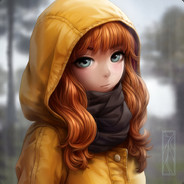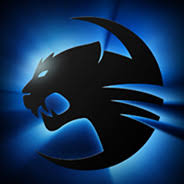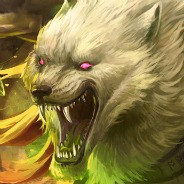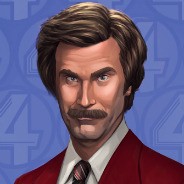I. Put the adjectives in the necessary degree:
1. He is (young) person in our group.
2. She is (pretty) girl on this photo.
3. Bungee jumping is inherently (dangerous)
4. Cycling is (hard) than other kind of sport.
5. Today I have got up (early) than usual.
II. Are the following cases true or false?
1. Professional sport makes athletes selfish and too ambitious.
2. Professional sport is a possibility to become famous.
3. Professional sport doesn’t help to earn money.
4. Professional sport educated a strong will, discipline, ability to overcome difficulties.
5. Athletes aren’t forced to keep diet.
III. Use with this names of sport play/ do/be into/go
Football, aerobics, bicycling, baseball, tennis, yoga, weight training, swimming, soccer.
IV. Read the text and answer the questions:
Cycling
We often hear a saying «Don't invent a bicycle» about something simple and known for a long time.
Really, the bicycle is old enough — more than a hundred years of age. Its first prototype appeared in 1791 in France. In 1800 a Russian peasant Artamonov made an iron bicycle and travelled on it from Nizhni Tagil to Moscow.
First bicycles looked odd: a large (about 1.5m high) front wheel with a cranked axle.
The back wheel was usually smaller. Bicycles were made of iron and riding them was not comfortable because of shaking. They were even called «boneshakers».
In 1868 rubber tyres were invented, first solid, then pneumatic. New types of bicycles appeared every year but only in 1885 people saw a model which looked like modern cycles. It had two almost equal wheels and a chain drive to the rear wheel. The frame of the cycle was diamond-shaped. This shape survived and became basic. The new machine looked more elegant than the old «spiders» which were soon abandoned. As time went by, new bicycles were invented — for two, three and even fifteen riders!
The first bicycle race was held in 1868 in Paris. But the sport became popular only several decades later because bicycles were expensive and only rich people could afford them. By the end of the 19th century many factories produced thousands of bicycles which became cheap, so many people could practise cycling and take part in various competitions.
Cycling competitions are generally divided into road and track events. Both kinds are in the Olympic programme. Olympic road events include individual and team races.
Individual races' distances are different usually up to 200 kilometres. The winner is the first cyclist who passes over the finish line with his front wheel.
In the team road event the teams start the contest with 2-4 minutes interval, and that team wins whose members get the best sum of timings.
Track events take place on special cycling tracks which look like elongated stadiums with a sloping runway made of concrete, wood or plastics.
Track events are very spectacular. The Olympic programme includes 1 km sprint races, 1 km heat or time trial, individual pursuit and team pursuit over 4 km.
Modern sport bicycles are very light but firm machines made of special metals.
Cyclists wear jersey shirts with pockets on the back, tight knee-long woollen shorts, perforated shoes, a cap or a leather crash helmet and mitts on their hands
Questions:
1. How old is a bicycle?
2. Who invented the first all-metal bicycle?
3. How did the first bicycles look like?
4. When were pneumatic tyres invented?
5. Where and when were the first bicycle races held?
6. When did cycling become a mass sport?
7. What events are included in cycling competitions?
8. Can you describe a cycling track?
Ответы на вопрос:
folklore, in translation, means "popular wisdom, popular knowledge." folklore - folk art, artistic collective activity of a people, reflecting its life, views and ideals, i.e. folklore is the national historical cultural heritage of any country in the world.
the works of russian folklore (fairy tales, legends, epics, songs, chastooshkas, dances, legends, and applied art) help to recreate the characteristic features of the national life of their time.
creativity in antiquity was closely associated with the work of man and reflected the mythical, historical ideas, as well as the beginnings of scientific knowledge. the art of the word was closely associated with other forms of art - music, dancing, decorative art. in science, this is called "syncretism."
folklore was an art organically inherent in folk life. the various uses of the works gave rise to genres, with their diverse themes, images, and style. in the most ancient period, most peoples had tribal legends, labor and ceremonial songs, mythological stories, and conspiracies. the decisive event, which laid the line between mythology and folklore itself, was the appearance of fairy tales, the plots of which were based on a dream, on wisdom, on ethical fiction.
in the ancient and medieval society, the heroic epic (the irish sagas, the russian epic and others) took shape. there were also legends and songs reflecting various beliefs (for example, russian spiritual poems). later, historical songs appeared, depicting real historical events and heroes, as they remained in popular memory.
the genres in folklore also differ in the way of performance (solo, chorus, chorus and soloist) and various combinations of text with melody, intonation, movements (singing and dancing, storytelling and playing).
with changes in the social life of society in russian folklore, new genres also arose: soldier, coachman, burlatz songs. the growth of industry and cities brought to life: romances, anecdotes, worker, student folklore.
now new russian folk tales do not appear, but the old ones are still being told and cartoons and feature films are being shot on them. many old songs are sung. but the epic and historical songs in a live performance are almost not heard.
for millennia, all peoples folklore was the only form of creativity. the folklore of every nation is unique, just like its history, customs, culture. and some genres (not only historical songs) reflect the history of a given people.
Популярно: Английский язык
-
Fill in the blanks with time adverbs or expressions from the list below...
 staisywell113.07.2021 05:14
staisywell113.07.2021 05:14 -
Соч 7 класс 1 четверть английский...
 daria20020513.01.2023 16:35
daria20020513.01.2023 16:35 -
легко для того кто знает английский...
 vania66603.06.2020 04:10
vania66603.06.2020 04:10 -
Choose the correct option to complete the sentences 1. Why do kids don t...
 artyommakarov119.04.2020 23:00
artyommakarov119.04.2020 23:00 -
Topic 2. Write a letter to your friend inviting him to your country/city...
 ponomarevdenisow2kh113.12.2020 09:55
ponomarevdenisow2kh113.12.2020 09:55 -
Use the appropriate forms of the verbs (past simple or past perfect) to complete...
 nik2004200219.01.2023 21:17
nik2004200219.01.2023 21:17 -
Портфолио по английскому на тему хобби(желательно не с сами знаете чего)...
 nekit240907.12.2022 06:37
nekit240907.12.2022 06:37 -
ОЧЕНЬ НУЖНО ЗАРАНЕЕ БОЛЬШОЕ ❤️ ...
 Настя3456568830.12.2021 18:38
Настя3456568830.12.2021 18:38 -
Замените выделенные слова местоимениями 1. We seeAlix every day. Мы видим...
 katerinabuzmk05.05.2020 20:53
katerinabuzmk05.05.2020 20:53 -
1.расположите части делового письма в правильном порядке: (1)i look forward...
 denishustov14.10.2021 06:14
denishustov14.10.2021 06:14
